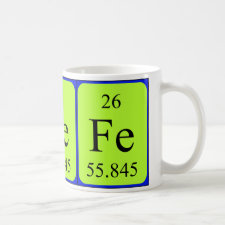
Authors: Utku S, Yilmaz E, Türkmen D, Uzun L, Garipcan B, Say R, Denizli A
Article Title: Ion-Imprinted Thermosensitive Polymers for Fe3+ Removal from Human Plasma.
Publication date: 2008
Journal: Hacettepe Journal of Biology and Chemistry
Volume: 36
Issue: (4)
Page numbers: 291-304.
Alternative URL: http://www.hjbc.hacettepe.edu.tr/article/36/4/291
Abstract: Thermosensitive gels have attracted a great deal of attention for the applications of drug delivery systems, actuators, separation and removal of biological compounds and metals. Poly(N-isopropylacrylamide) (poly(NIPA)), a representative gel, has a lower critical solution temperature (LCST) in the vicinity of 32°C i.e. showing hydrophilicity and hydrophobicity in water at lower and higher temperatures, respectively. Novel adsorbents using thermosensitive gels for trapping metals were reported where poly(NIPA) was used as a thermosensitive backbone polymer. A chelating group, which interacts with heavy metals, was introduced into poly(NIPA) with a molecular imprinting technique using a specific metal as the template. Although it is emphasized that metals play important roles in biological processes and some of them are classified as essential, the toxic symptoms will manifest when a metal ion level exceeds a certain threshold level. Many symptoms of iron toxicity, for example heart attacks, diabetes, arthritis, depression and liver failure, are arised from the absorption of iron in unacceptably high concentrations because of a genetic failure or by accidental ingestion. The aim of this study is to prepare ion-imprinted polymers for the removal of iron from aqueous solutions and solutions thalassemia patient`s plasma. N-methacryloyl-(L)-cysteine (MAC) was selected as the metal complexing monomer, with the goal preparing a solid-phase which has a high selectivity for Fe3+ ions. Poly(NIPA) was used as a thermosensitive backbone polymer matrix. A chelating group [N-methacryloyl-(L)-cysteine (MAC)] which interacts with Fe3+ ions, was introduced into poly(NIPA) with a molecular imprinting technique. After removal of the Fe3+ ions, adsorption of Fe3+ ions from thalassemia patient's plasma both on the poly(NIPA-MAC) and Fe3+-imprinted poly(NIPA-MAC) particles were studied in batch-wise.
Template and target information: iron ion, ferric ion, Fe(III)
Author keywords: Thermosensitive polymers, poly(NIPA), ion imprinting, Thalassemia, affinity binding



Join the Society for Molecular Imprinting

New items RSS feed
Sign-up for e-mail updates:
Choose between receiving an occasional newsletter or more frequent e-mail alerts.
Click here to go to the sign-up page.
Is your name elemental or peptidic? Enter your name and find out by clicking either of the buttons below!
Other products you may like:
 MIPdatabase
MIPdatabase









